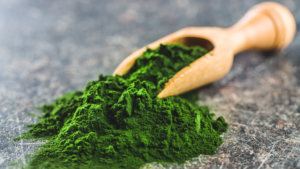
With its hairy, grayish-green strands hanging from tree branches, Usnea lichen has an intriguing appearance. But beyond its distinctive looks, Usnea has an even more fascinating history. Known as old man’s beard, this lichen has been prized in herbal medicine traditions across cultures for generations. Usnea’s use in natural remedies spans from ancient times to the present day.
This lichen is actually a symbiotic pairing of algae and fungus living together. The algae produces food through photosynthesis, while the fungus provides the structural support. This unique composite organism contains specialized compounds, many of which science is now investigating for medicinal benefits.
Traditional Uses of Usnea
Usnea has an extensive background in herbalism, valued for its versatile healing properties. Cultures worldwide have applied Usnea to treat wounds, bolster respiratory health, and enhance immune function. Usnea’s key bioactive components, including usnic acid and vulpinic acid, give this lichen antioxidant, anti-inflammatory and pain-relieving capabilities according to research.
Studies also indicate Usnea may restrain the growth of certain pathogenic bacteria and fungi species. Some research has focused on Usnea’s antimicrobial effects against Staphylococcus aureus (Staph) and Candida albicans (yeast) specifically. However, substantially more scientific inquiry is required to fully understand the scope of Usnea’s therapeutic potential.
Sourcing and Preparing Usnea
With over 600 identified Usnea species around the globe, these lichens display remarkable diversity. Different types thrive in various climates and ecosystems, growing abundantly on tree branches in forests of many regions. To harvest Usnea sustainably, precise species identification is key for mindful collection.
As our planet faces rapid climate change, protecting vulnerable lichen populations and their sensitive forest habitats remains a crucial priority looking ahead. Sustainable harvesting allows Usnea’s gifts to be shared for generations while safeguarding these intricately balanced organisms.
To utilize Usnea medicinally, the lichen can be processed into several forms:
- Tinctures – By soaking Usnea in a high-proof alcohol for 4-6 weeks, the active compounds infuse into the liquid. After straining and filtration, these concentrated tinctures are ready for use.
- Teas – For respiratory ailments, steeping 1-2 teaspoons of dried Usnea in hot water for 15+ minutes releases beneficial compounds into a traditional medicinal brew.
- Topicals – Usnea salves and ointments can be created by first infusing the lichen into oil for several weeks. However, more research is still needed on Usnea’s efficacy in topical applications.
Ensuring Product Quality and Safety
When preparing Usnea extracts, tinctures or teas, careful quality control is vital. Testing for contaminants like heavy metals, pesticides and other adulterants verifies the safety and purity of the final products. Collaborating with reputable labs provides assurance through scientific analysis.
Additionally, sourcing Usnea only from ethical suppliers who harvest the lichen sustainably helps maintain integrity from start to finish. Proper storage away from heat, light and oxygen after production preserves the potency and shelf life of the preparations. Usnea’s gifts can then be shared with peace of mind.
Blending Old and New Knowledge
While Usnea has centuries of traditional use, modern scientific examination can help unlock even more of this lichen’s secrets. The symbiotic nature of Usnea provides opportunities to appreciate the interconnectedness of living things, both large and microscopic.
Studying these ecologically intertwined organisms yields new discoveries about natural compounds and their therapeutic mechanisms. Insights from this research can be combined mindfully with time-honored herbal wisdom for a nuanced, evidence-based understanding of Usnea’s benefits.
Ongoing investigation of traditionally utilized natural substances provides benefits on multiple levels. Not only are new functional applications uncovered, but a deeper respect for the natural world also emerges. Moving forward, collaborative approaches that integrate both ancient and cutting-edge knowledge offer much promise in sustainably harnessing nature’s healing gifts.
A Potent Source of Health from the Forest
With its captivating backstory spanning cultures and centuries, Usnea lichen offers mystique and intrigue. This fascinating symbiotic organism’s long history of use in herbal medicine provides a solid foundation to build upon. Further developing our comprehension of Usnea through careful scientific inquiry promises to uncover more of its anti-inflammatory, antimicrobial and immunomodulating properties.
What other therapeutic potentials are waiting within this unique lichen to still be revealed? As research continues to unveil Usnea’s bioactive benefits layer by layer, evidence grows for its judicious application in natural health practices when responsibly sourced. Blending insights from traditional wisdom and rigorous science may elucidate how to best harness nature’s gifts from this beard-like lichen dangling within the forest.



